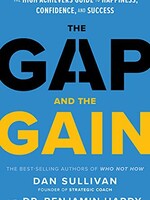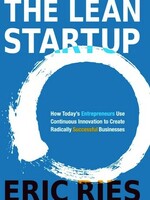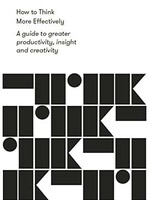The Heart of Transformation - Book Summary
Build the Human Capabilities That Change Organizations for Good
Release Date: November 19, 2023
Book Author: Michael J. Leckie
Categories: Management & Leadership, Entrepreneurship, Corporate Culture, Career & Success
Release Date: November 19, 2023
Book Author: Michael J. Leckie
Categories: Management & Leadership, Entrepreneurship, Corporate Culture, Career & Success
In this episode of 20 Minute Books, we will be diving into "The Heart of Transformation", a powerful guide penned by leadership consultant and public speaker, Michael J. Leckie. The book offers insightful tools for leaders and managers looking to transform their organizations to meet the demands of the twenty-first century. Leckie, with his rich background as the Chief Learning Officer for the digital industrial transformation at General Electric and now at the helm of his own firm, Silverback Partners, imparts invaluable knowledge based on his own experiences.
"The Heart of Transformation" isn't just for the industry veterans, it also serves as a primer for entrepreneurs, small business owners, and indeed anyone curious about how to change a workplace for the better. It shines a spotlight on six specific capabilities that leaders can hone to navigate the intricate landscape of the digital world, promoting adaptability and the enhancement of corporate cultures. In just 20 minutes, we'll provide you with a concise summary of Leckie's key ideas and insights, helping you to understand the essence of effective organizational transformation.
Unlock six power keys to navigate your organization in the digital age
The world of business has been rocked, rolled, and spun upside down with the rise of digital technology. Yet, paradoxically, a significant number of organizations stubbornly cling onto traditional operational strategies that are fast becoming redundant.
Take the case of the once-mighty General Electric. A forerunner of American industry for over a hundred years, its foundations were suddenly shaken and its once indomitable structure required an extensive overhaul – all because it was reluctant to adapt to the new economy.
This vivid example underscores the volatile nature of today's business landscape. But fear not! Michael Leckie's insightful book, 'The Heart of Transformation', brings you a lifeline.
In this captivating journey, we will delve into six dynamic capabilities essential for reshaping organizational resilience amid the rapidly evolving and capricious nature of today's digital era. Additionally, you'll uncover practical tools for integrating these transformative principles into your organization through a set of compelling questions addressing each specific capability. Dive in, embrace the change and lead your organization into a prosperous future!
Navigating the unknown: Prioritizing exploration over execution
Ready to revolutionize your organization? The maiden voyage begins with prioritizing exploration over execution. Don't misinterpret this—execution isn't the villain here. It simply refers to implementing a set strategy or a predetermined course of action—an unavoidable aspect of any business.
The real challenge lies in the rigid obsession with execution when the tides shift, and the organization needs to adapt. Plans geared towards resolving yesterday's problems often fail to tackle today's issues. This conundrum amplifies when leaders turn a blind eye towards reevaluating once-successful strategies.
Enter exploration—the knight in shining armor. It is the courage to question the relevance of old systems and practices, the audacity to challenge previously acclaimed ideas, and the willingness to identify areas that require revision. Even though it might be a bitter pill for leaders to swallow, it is this bold exploration that fuels organizational transformation.
So how does one navigate through exploration before executing? Here's a series of five potent questions to aid you and your team on this journey.
To kick off, ask, "What do you think?" This seemingly simple question stirs the curiosity that forms the backbone of transformation.
Next, question, "What are you assuming is true?" Assumptions serve as the bedrock for many of our ideas, and exposing these assumptions aids in a clearer comprehension of each stakeholder's standpoint.
The third question probes, "Whose voice is missing?" This prevents an echo chamber from forming, promoting a diversity of thought—imperative in today's world characterized by information silos.
The fourth question—somewhat unconventional yet highly effective—asks, "What is your third-best idea?" The reasoning behind this question is intriguing; the first idea is usually the safest, while the second is merely a rephrasing of the first. It is often the third idea that sparks innovation and out-of-the-box thinking.
The final question, "What didn't you say that needs saying?" encourages the vocalization of uncomfortable or intimidating thoughts, ensuring every perspective is heard.
Armed with these five crucial questions, leaders can embark on exploring innovative solutions for emerging challenges before jumping into execution.
Learning to thrive: Why continuous learning overtakes existing knowledge
Knowledge is undeniably a powerful asset within any organization. However, in the whirlwind of digital transformation, Michael Leckie points out that continuous learning holds a higher pedestal.
Historically, knowledge acted as the beacon of a worker's value. The economy thrived on "knowledge workers"—legal practitioners, doctors, engineers—who amassed specialized knowledge and utilized it in their professional roles.
But the advent of the digital age turned the tables. The knowledge a worker enters a job with, no longer suffices. Today's worker's value hinges on their adaptability and continuous learning on the job. As digital technology accelerates the pace of change, the era of the 'learning worker' is unequivocally upon us.
So, how can one make the jump from a 'knowledge worker' to a 'learning worker'? It begins with questioning what you presume to know and being open to course corrections.
To start, ask yourself, "Who challenges my beliefs?" Proactively seek out people who will jolt you out of your comfort zone and question your ideas. Welcome their challenges, express gratitude for their candor.
Next, pose the question, "How is my idea wrong?" Steering the conversation towards identifying the flaws rather than validating the idea encourages critical feedback, though it may be uncomfortable to receive.
Thirdly, query, "What is my blind spot?" Discover patterns of consistent errors or overlooked aspects to rectify them effectively.
Moving on, question, "When was I last wrong?" A long gap since your last mistake might indicate a lack of constructive feedback. Acknowledging a specific error, learning from it, and voicing it out loud fosters trust and respect.
Finally, ask yourself, "Am I OK with not knowing?" Humility is a virtue to embrace in this journey. It's acceptable not to have all the answers, and it's fine to proceed amidst ambiguity. Embracing learning over knowledge signifies the agility to implement a plan, while also being flexible to adapt it as new learning emerges.
The path to transformation: Embracing change over safeguarding comfort zones
Protection is an innate instinct, a drive that applies to our relationships, possessions, and even our ideas. However, in the corporate world, safeguarding may become a double-edged sword. Businesses thrive not by clinging to comfort zones, but by adapting and evolving, signifying the need for leaders to embrace change.
Organizational change is a gradual process— incrementally bringing each individual on board, which demands acceptance of discomfort. Yet, Michael Leckie lightens this daunting process with a set of five questions.
Firstly, contemplate, "What's the worst that could happen?" Failure might loom as the obvious outcome of a novel business idea, but articulating this fear out loud can make the prospect of change less intimidating.
Secondly, ponder, "What's the cost of staying safe?" While change embodies risk, remaining glued to the status quo could prove just as risky. List out the opportunities that could potentially slip away by clinging to old routines.
Thirdly, consider, "What am I afraid to do?" This personal question brings your individual risks to the forefront, revealing your values and priorities.
Fourthly, ask yourself, "How can I lead out loud?" Change demands that leaders demonstrate the behaviors they expect their organizations to embody. Discover ways to authentically exemplify the desired change, to foster a positive ripple effect.
Finally, question, "When did I last ask for help?" In the path to transformation, seeking help is vital. Garnering feedback allows an objective measure of whether meaningful change has been initiated or if further actions are warranted.
Pioneering trails rather than tracing paths
Taking a closer look at prioritizing pioneering over following a prescribed path, it becomes evident that the essence of pathfinding lies in solidifying a set of values and enabling individuals to charter their own way forward.
To understand how this plays out in reality, consider the case of the Canadian paper manufacturer, Abitibi. During Leckie's tenure in the 90s, the firm found itself grappling with financial struggles, necessitating an urgent 10 percent reduction in costs. The initial response was a meticulous examination of each team's expenditure, aiming to dictate a budget that would allocate every dollar.
However, the firm opted for a more empowering approach. The leadership directed each team to cut their costs by 10 percent, leaving the 'how' in their hands. Each team was given the liberty to carve their own path towards the target. The result was an encouraging 15 percent dip in expenses by the next quarter.
This narrative brings to the fore six probing questions that can aid in embedding the philosophy of pathfinding over path-following in your organization.
Firstly, ponder, "Where are we truly headed?" This question fine-tunes the clarity regarding the company's 'North Star'—its ultimate goal—not just in words but through actions reflecting its values.
Secondly, ask, "What matters most?" This question delves into the underlying assumptions that shape an organization's culture—those elements that often remain unspoken.
Thirdly, consider, "Does this reflect who we are?" This introspective query ensures your daily activities align with your North Star, holding you accountable.
Fourthly, question, "Who would be the most knowledgeable?" Recognize the necessity of reaching out to the right individuals who possess in-depth understanding in specific areas.
Fifthly, ask, "Can we openly discuss our differences?" Recognizing that conflicts are inevitable, this question facilitates conversations that may be awkward but necessary.
Lastly, look inward and ask, "What am I concealing?" This personal question prompts exploration of any internal discord accompanying a decision, nudging you towards confronting it.
Choosing to create before cloning
Being at the forefront of innovation is a coveted position for every business. However, it's a bitter truth that many companies remain blissfully ignorant of innovation, focusing instead on duplication and amplification of successful methods.
This tendency to clone and scale what's already working is a double-edged sword. It may yield satisfactory results for a while, but inevitably, there comes a time when these methods lose their potency, leaving businesses in a rut, stubbornly clinging to an obsolete business model.
So, how does one prioritize creation over cloning? The secret lies in learning from your blunders and playing for the long haul.
Let's draw inspiration from Amazon. When Jeff Bezos was preparing to take the company public, he charted out a plan for the company to operate at a loss for at least five years. The goal was to amass market share and understand customer preferences. This strategy of learning by trial and error paid off handsomely for shareholders in the long run.
Admittedly, not every company can follow in Amazon's footsteps. Nevertheless, extracting lessons from failures and fostering a long-term approach form the foundation of genuine innovation. To embark on this journey, here are five questions to guide you.
Firstly, ask yourself, "What have my failures taught me?" Catalogue your failures and look for recurring patterns to consciously avoid repeating those mistakes.
Secondly, query, "Am I ready for the long haul?" Embracing a long-term strategy can be challenging, particularly in light of short-term shareholder expectations. This question encourages the recognition and assessment of the sacrifices needed for a long-term commitment.
Thirdly, ponder over, "What's the price of replicating success?" This question touches upon the opportunity cost of copying strategies. When you instruct your team to replicate a specific plan, you inadvertently dissuade them from conceiving better, innovative ideas.
Fourthly, consider, "How can I relinquish my position at the center?" Looking at issues through others' perspectives is challenging yet rewarding and necessary.
Lastly, challenge yourself with, "How would I disrupt my own organization?" By evaluating your weaknesses or vulnerabilities from a competitor's standpoint, you can proactively fortify those areas before they are exploited.
Personalizing before proceduralizing
The final trait we'll delve into is the art of personalizing before proceduralizing. This strategy underpins how we perceive and interact with individuals in an organization, reinforcing the notion that colleagues are more than just their designations—they're whole individuals with unique identities.
Every organization has established roles—from entry-level employees to the CEO—that are defined by certain expectations and responsibilities. The issue arises when individuals outgrow their designated roles and are capable of contributing far more. However, fear of transgressing the boundaries of their job descriptions often discourages them from reaching their potential. This missed opportunity to tap into the hidden skills of your team can be a significant loss for any organization.
Moreover, it's crucial to see colleagues as humans by understanding who they are outside of the office. Knowing someone personally paves the way for sincerity, reliability, and mutual sacrifices—all invaluable assets. While achieving this level of familiarity in large organizations can be a challenge, it's a worthy endeavor.
To make personalizing a priority, consider asking your colleagues these five thought-provoking questions:
Firstly, ask them, "When do you feel at your best?" This question sheds light on when and where people are most efficient and fruitful.
Secondly, pose the question, "How will we recognize if things are going off track?" Every relationship faces the risk of derailing. Recognizing this possibility early on, and discussing it openly, can ward off the shadows of guilt and assist in improving the situation.
Thirdly, ask, "How could we enhance our collaboration?" Despite seeming cliched, this question is one of the most critical ones as it opens up the possibility of changing the way you work together to improve productivity.
Fourthly, ask, "What's your driving force?" Knowing what motivates people can help you connect with them on a deeper level, fostering a healthy working relationship.
Finally, ask, "What do you expect from me?" Asking this question sincerely and with genuine interest can significantly contribute to humanizing professional relationships in the workplace.
Wrapping it up
In this summary, you've discovered the six key abilities that can catalyze a transformation in an organization. Allow me to remind you of them: Venturing before implementing, studying before assuming, adapting before preserving, pioneering before path-following, creating before cloning, and personalizing before proceduralizing.



